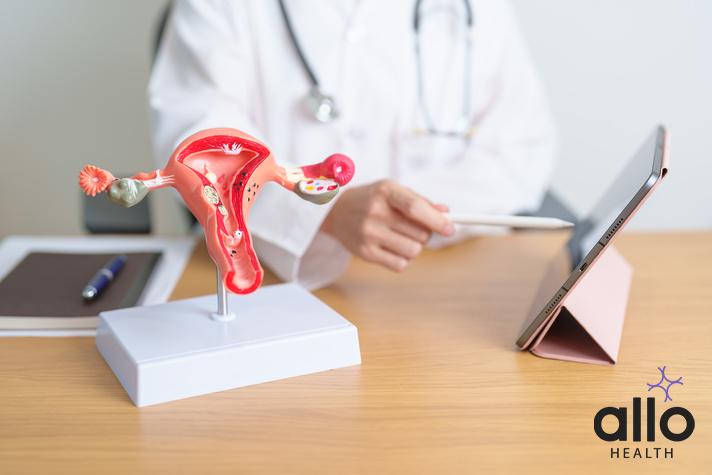How Is Gonorrhea Diagnosed?

Allo Health is dedicated to personalized well-being, offering support and trusted information tailored to individual health goals. The platform emphasizes human-generated content, led by a distinguished medical team of experts, including physicians and sexual health specialists. Their commitment to credibility involves rigorous fact-checking, authoritative research, and continuous updates to ensure accurate, up-to-date information. Allo Health's unique approach goes beyond conventional platforms, providing expert-led insights and a continuous commitment to excellence, with user feedback playing a crucial role in shaping the platform's authoritative voice.

Dr Sanina Mansoor holds MBBS degree from Yenepoya university,Mangalore.She has 8 years of experience working as a medical officer at various health centres and medical colleges.
Why This Was Upated?
Our experts continually monitor the health and wellness space, and we update our articles when new information became available.
Updated on 26 February, 2025
- Article was updated as part of our commitment to diversity, equity, and inclusion.
"The following blog article provides general information and insights on various topics. However, it is important to note that the information presented is not intended as professional advice in any specific field or area. The content of this blog is for general educational and informational purposes only.
Book consultation
The content should not be interpreted as endorsement, recommendation, or guarantee of any product, service, or information mentioned. Readers are solely responsible for the decisions and actions they take based on the information provided in this blog. It is essential to exercise individual judgment, critical thinking, and personal responsibility when applying or implementing any information or suggestions discussed in the blog."
Diagnosing gonorrhoea is essential for timely treatment and prevention of complications. Gonorrhoea can be asymptomatic in some individuals, making laboratory testing crucial for accurate diagnosis. This lesson explores the various methods used to diagnose gonorrhoea, including laboratory tests and clinical evaluation.
Clinical Evaluation
- Medical History: Healthcare providers typically begin the diagnostic process by taking a detailed medical history. They may inquire about symptoms such as abnormal genital discharge, painful urination, or recent sexual activity. Individuals are encouraged to provide honest and thorough information to facilitate an accurate diagnosis.
- Physical Examination: A physical examination may be performed to assess for signs of gonorrhoea infection. Healthcare providers may inspect the genitals, rectum, throat, and other potentially affected areas for abnormalities such as discharge, inflammation, or lesions. In some cases, additional diagnostic tests may be warranted based on clinical findings.
Laboratory Testing
- Nucleic Acid Amplification Tests (NAATs): NAATs are highly sensitive and specific laboratory tests used to detect the presence of Neisseria gonorrhoea DNA or RNA in clinical specimens. Common specimens for NAAT testing include urine, genital swabs (urethral, cervical, or vaginal), rectal swabs, and throat swabs. NAATs can accurately diagnose gonorrhoea even in asymptomatic individuals and are recommended as the primary diagnostic method by most guidelines.
- Culture: Culture-based methods involve isolating and growing Neisseria gonorrhoea bacteria from clinical specimens collected from infected sites. While culture was historically the gold standard for gonorrhoea diagnosis, its sensitivity may be lower compared to NAATs, particularly in cases of asymptomatic infection or when inadequate specimens are collected. Despite its limitations, culture may still be used in specific situations, such as antimicrobial susceptibility testing.
- Gram Stain: Gram staining of clinical specimens may be performed to visualise Neisseria gonorrhoea bacteria under a microscope. Gram stain can provide rapid preliminary results, but its sensitivity and specificity for gonorrhoea diagnosis are lower compared to NAATs and culture. Therefore, it is less commonly used as a standalone diagnostic test for gonorrhoea.

Additional Testing
- Dual Testing for Gonorrhoea and Chlamydia: Given the high rates of co-infection with Chlamydia trachomatis, healthcare providers often recommend dual testing for gonorrhoea and chlamydia. NAATs are available for simultaneous detection of both pathogens from a single clinical specimen, streamlining the diagnostic process and ensuring comprehensive screening for common sexually transmitted infections.
- Extra-genital Testing: In addition to genital specimens, extra-genital testing may be indicated for individuals engaged in receptive anal or oral intercourse or those with symptoms suggestive of extragenital infection. Rectal and throat swabs can be collected for NAAT testing to diagnose gonorrhoea at these sites.
Partner Notification and Screening
- Partner Notification: Once a diagnosis of gonorrhoea is confirmed, healthcare providers may discuss partner notification strategies with the infected individual. Partner notification involves informing sexual partners about potential exposure to gonorrhoea and encouraging them to seek testing and treatment. Partner notification may be conducted confidentially or anonymously through public health departments or partner services programs.
- Screening Recommendations: Healthcare providers may recommend routine screening for gonorrhoea, particularly for individuals at increased risk of infection, such as sexually active adolescents and young adults, men who have sex with men (MSM), and individuals with a history of other sexually transmitted infections. Screening may be performed annually or more frequently based on individual risk factors and sexual behaviour.
Diagnosing gonorrhoea involves a combination of clinical evaluation and laboratory testing methods. Nucleic acid amplification tests (NAATs) are the preferred diagnostic method due to their high sensitivity and specificity, allowing for accurate detection of Neisseria gonorrhoea DNA or RNA in various clinical specimens. Partner notification and screening play crucial roles in preventing further transmission of gonorrhoea within communities. By understanding the diagnostic methods and implementing appropriate testing and screening protocols, healthcare providers can effectively diagnose gonorrhoea, initiate timely treatment, and prevent complications associated with untreated infection.









































